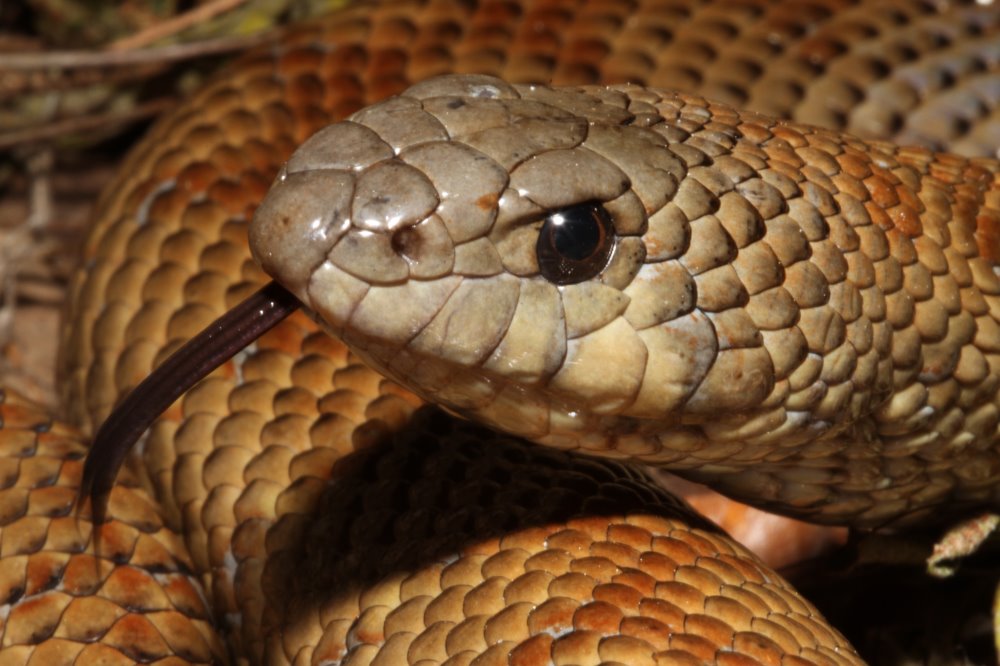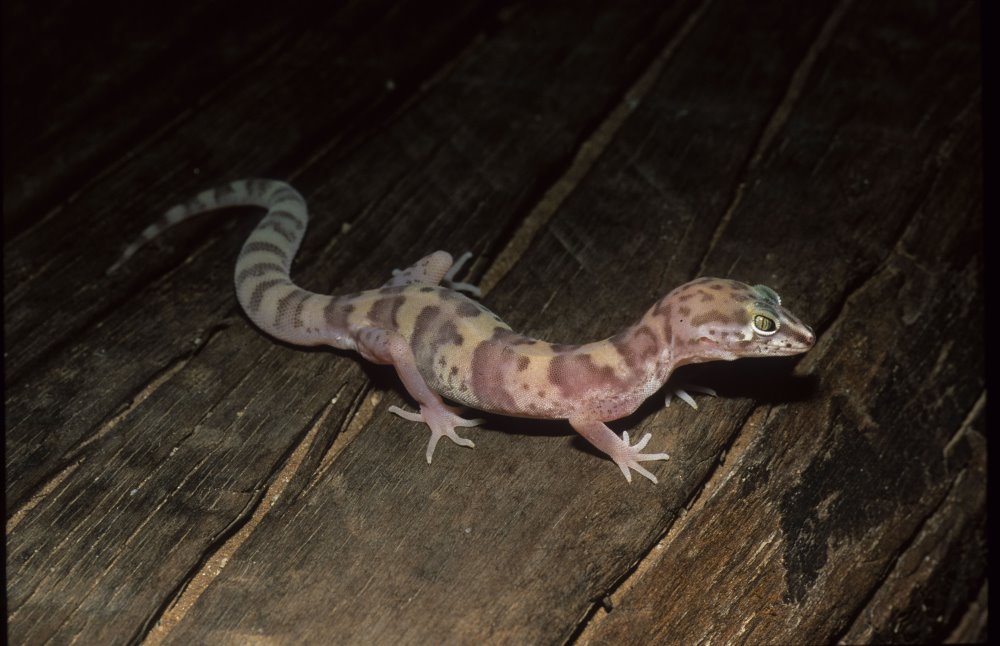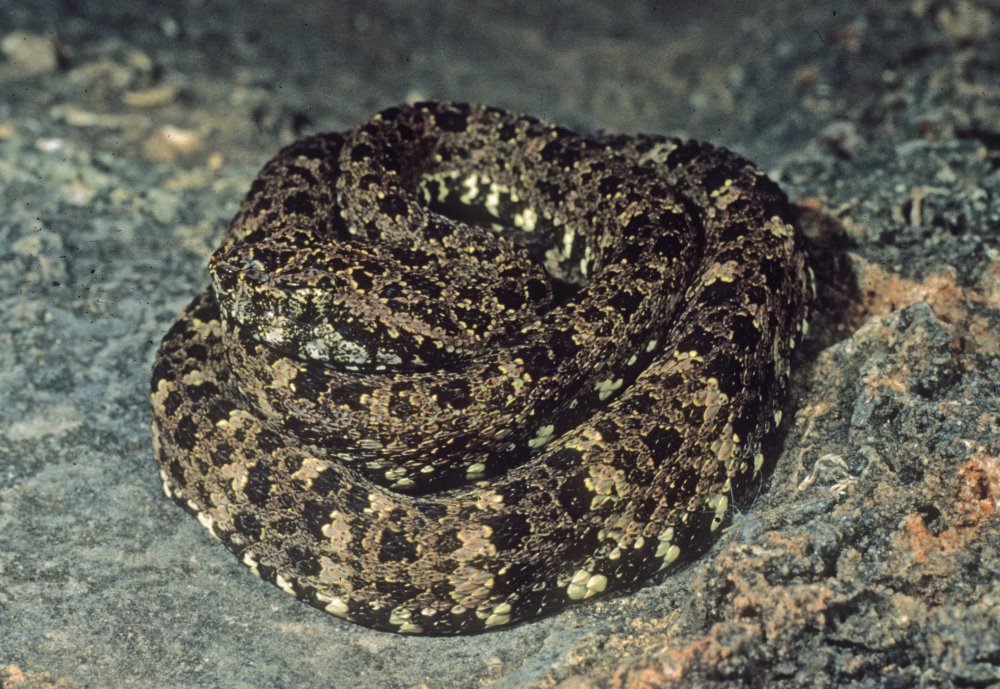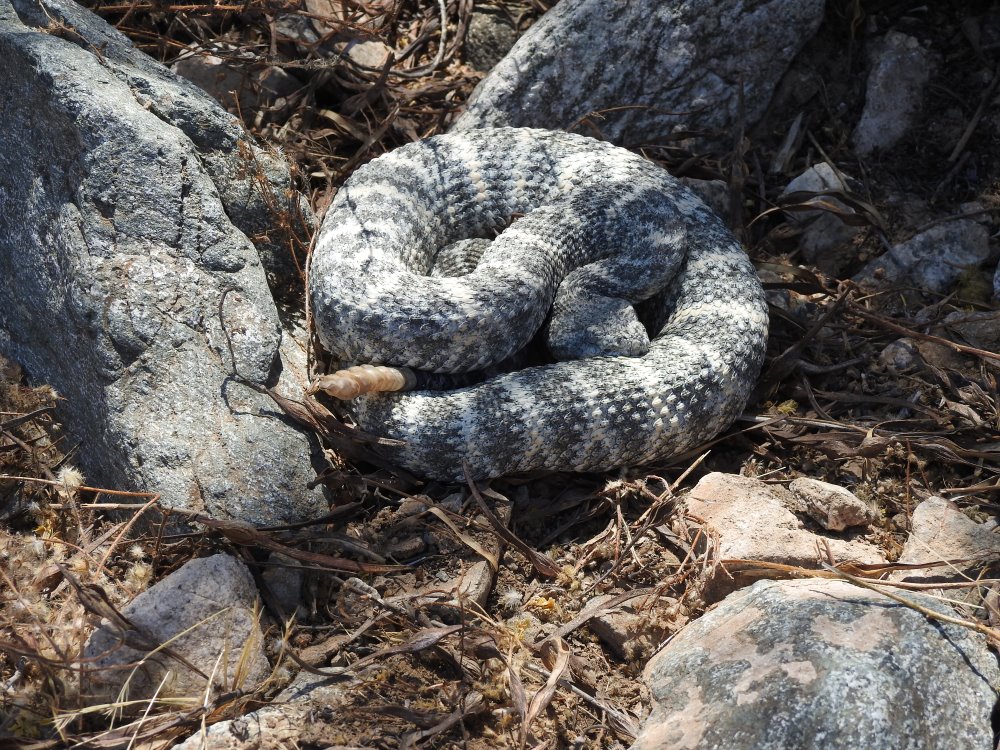Reptile & Amphibian
News Blog
Keep up with news and features of interest to the reptile and amphibian community on the kingsnake.com blog. We cover breaking stories from the mainstream and scientific media, user-submitted photos and videos, and feature articles and photos by Jeff Barringer, Richard Bartlett, and other herpetologists and herpetoculturists.
Friday, October 30 2020
Happy Rattlesnake Friday! What a fantastic close up of this horned viper ( Cerastes cerastes), uploaded by kingsnake.com user gaboonviper1388! Be sure to tell them you liked it here! As always on Friday, we celebrate all of our venomous reptiles for their contribution to the world.

Upload your own reptile and amphibian photos at gallery.kingsnake.com, and you could see them featured here!
Thursday, October 29 2020
An amazing shot of this Indigo Snake in the field in our herp photo of the day uploaded by kingsnake.com user ACO3124! Be sure to tell them you liked it here!

Upload your own reptile and amphibian photos at gallery.kingsnake.com, and you could see them featured here!
Wednesday, October 28 2020
We hope that this amazing field shot of a Wood Frog kicks off your day right in our Herp Photo of the day, uploaded by kingsnake.com user casichelydia . Be sure to tell them you liked it here!

Upload your own reptile and amphibian photos photos at gallery.kingsnake.com, and you could see them featured here!
Tuesday, October 27 2020
What a cute plated lizard in our herp photo of the day, uploaded by kingsnake.com user jungleemporium ! Be sure to tell them you liked it here!

Upload your own and photos at gallery.kingsnake.com, and you could see them featured here!
Monday, October 26 2020
Hope this beautiful Sumatran Short Tail (aka Black Blood) in our Herp Photo of the day, uploaded by kingsnake.com user amaliamoran brightens your Monday! Be sure to tell them you liked it here!

Upload your own reptile and amphibian photos photos at gallery.kingsnake.com, and you could see them featured here!
Friday, October 23 2020
In celebration of all things venomous, ciccada is on the menu for this Copperhead in our herp photo of the day uploaded by kingsnake.com user coolhl7 ! Be sure to tell them you liked it here!

Upload your own reptile and amphibian photos photos at gallery.kingsnake.com, and you could see them featured here!
Thursday, October 22 2020
Gotta love the sassy nature of the Schneider's smooth-fronted caiman in our Herp Photo of the day, uploaded by kingsnake.com user cpipes! Be sure to tell them you liked it here!

Upload your own reptile and amphibian photos photos at gallery.kingsnake.com, and you could see them featured here!
Wednesday, October 21 2020
We never post enough kingsnakes, so get a gander of this beautiful kingsnake in our herp photo of the day, uploaded by kingsnake.com user kasie ! When this photo was originally posted in 2006, Martha was over 30 years old! Be sure to tell them you liked it here!

Upload your own and photos at gallery.kingsnake.com, and you could see them featured here!
Tuesday, October 20 2020
Gotta love Garters! Look at this stunner in our Herp Photo of the day, uploaded by kingsnake.com user tomdickinson! Be sure to tell them you liked it here!

Upload your own reptile and amphibian photos at gallery.kingsnake.com, and you could see them featured here!
Monday, October 19 2020

Note the similarities such as the narrow pointed head of mole and pine snakes that is designed for plowing through subsurface burrows. This is a young adult mole snake.
They’re a half a world apart but the similarities between the African Mole Snake, Pseudaspis cana, and the American Pine Snakes, Pituophis melanoleucus ssp. are rather remarkable. Do not mistake the mole snake of this article for our various Mole Kingsnakes. The two are very different. If you have been fortunate enough to work with both African Mole and American Pine snakes you’ll know immediately what I’m talking about.
Both are small-headed, strong-jawed, powerful constrictors that spend a goodly amount of time pursuing rodents in their subsurface burrows. Our gopher and pine snake pursue pocket gophers and the mole snakes pursue mole rats and other rodents. The two differ in scalation, with the scales of the pine snakes being keeled and with the mole snake usually (but not always) having smooth scales. A length of 6 feet is not unusual for them and anecdotal accounts of even greater lengths are often heard.
Mole snake hatchlings and juveniles are straw colored and strongly patterned with dark alternating dorsal and lateral bars. The markings fade with age and adults vary from an almost uniform light olive to dark olive-brown in color. Hatchlings of the American pine snake may be paler than the adults. This snake varies in color by subspecies with the northern subspecies ( P. m. melanoleucus) being the most strongly patterned in chocolates, black, and white. The Florida subspecies, P. m. mugitus, is the palest (sometimes almost a uniform straw tan), and as indicated by its common name the Alabama/Mississippi subspecies the Black Pine, P. m. lodingi, is the darkest.
Mole and Pine snakes also differ in reproductive modes. The mole snake bears large litters (usually between 20 and 90) of live young. The Pines produce small clutches (often only 3 to  of large eggs.
Both species are tough and they know it. And they’re not at all reluctant to pass that knowledge on. If unduly disturbed both hiss loudly, assume a striking “S,” and lunge at the intruder. But both do tame and some make excellent pets.
Continue reading "Mole-Pine snake Similarities"
What a stunning boa in our Herp Photo of the day, uploaded by kingsnake.com user BoaZilla! Be sure to tell them you liked it here!

Upload your own reptile and amphibian photos at gallery.kingsnake.com, and you could see them featured here!
Friday, October 16 2020
Happy Rattlesnake Friday! What a stunning Brazil's Lancehead in our Herp Photo of the day, uploaded by kingsnake.com user neverscared ! Be sure to tell them you liked it here!

Remember, we share photos of all our venomous reptiles to help celebrate their place in this world and help dispel some of the myths surrounding them. They contribute so much to our medical community and environmental health, they need our help for their conservation!
Upload your own reptile and amphibian photos photos at gallery.kingsnake.com, and you could see them featured here!
Thursday, October 15 2020
How cool is this African Herald Snake ( Crotaphopeltis hotamboeia) in our Herp Photo of the day, uploaded by kingsnake.com user MVH4 . Gotta love colubrids of all types! Be sure to tell them you liked it here!

Upload your own reptile and amphibian photos at gallery.kingsnake.com, and you could see them featured here!
Wednesday, October 14 2020
What wonderful color contrast in this hatchling Mud Snake in our herp photo of the day, uploaded by kingsnake.com user Godfrey ! Be sure to tell them you liked it here!

Upload your own and photos at gallery.kingsnake.com, and you could see them featured here!
Tuesday, October 13 2020
Alligator lizards are becoming more popular as reptile pets and it is easy to see why in our herp photo of the day, uploaded by kingsnake.com user SalS ! Be sure to tell them you liked it here!

Upload your own reptile and amphibian photos at gallery.kingsnake.com, and you could see them featured here!
Monday, October 12 2020
This hatching Burmese python our Herp Photo of the day, uploaded by kingsnake.com user OrangeTurtle is super creamy and beautiful. Seeing these make a comeback at shows reminded us WHY we keep fighting. Be sure to tell them you liked it here!

Upload your own reptile and amphibian photos at gallery.kingsnake.com, and you could see them featured here!
Friday, October 9 2020
Happy Rattlesnake Friday! Let's celebrate in the mighty southwest beauty of the Rock Rattlesnake here in our Herp Photo of the day, uploaded by kingsnake.com user Janne ! Be sure to tell them you liked it here!

Upload your own reptile and amphibian photos photos at gallery.kingsnake.com, and you could see them featured here!
Thursday, October 8 2020
Our Herp Photo of the Day shows and amazing look inside the egg of a Russian Tortoise to be, uploaded by kingsnake.com user tortusjack!
Be sure to tell them you liked it here!

Upload your own reptile and amphibian photos photos at gallery.kingsnake.com, and you could see them featured here!

Banded Geckos look a lot more delicate than they actually are. This is a San Diego Banded Gecko.
Counting species and subspecies there are 7 forms of banded geckos, genus Coleonyx, in the American West. Two of these, the Barefoot, C. switaki, and the Reticulated C. reticulatus, are larger than the remaining 5 and have very limited ranges. One, the Texas, C. brevis, is the easternmost and is smaller than any of the others. It is the remaining 4, all subspecies of the wide ranging Western Banded Gecko, C. variegatus, that we shall mention here. All have elliptical pupils and are nocturnal. The body is slender and between 2 and 3 inches long. The original tail (the tail is easily autotomized and often in some stage of regeneration) is about the same length as the snout-to-vent. Original tails are prominently banded.
The 4 subspecies of the Western Banded Gecko that occur in the USA are the San Diego, C. v. abbotti, the Tucson, C. v. bogerti, the Utah, C.v. utahensis, and the Desert, C. v. variegatus. Appearance differences are slight and it is best if you are interested in a particular form that you check a field guide for ranges.
Generally speaking though, the San Diego subspecies occurs on the Pacific slopes of southern CA. The Tucson form may be encountered in seAZ and swNM, the Utah race is restricted to swUT and immediately adjacent NV and AZ, and the Desert, by far the most wide-ranging of the 4, is found over much of AZ, NV and eastern CA.
Although these little geckos may be found beneath surface debris such as wood, cardboard, and rock by day, I’ve always found it a lot more fun to road hunt them at night. They are active, their light color contrasts well with dark pavement, and they cross roads in a series of darting rushes, often with their tail curled up over their back, this initially giving them the appearance of a large scorpion. Keep this similarity in mind as you jam your car into park, slam open the door, and rush out to slap a cupped hand of the little creature on the road. It’s not pleasant to be painfully surprised!
Continue reading "Some Banded Geckos of the American West"
Wednesday, October 7 2020
Hang in there, just like the Tree Frog in our Herp Photo of the day, uploaded by kingsnake.com user gerrygi! Be sure to tell them you liked it here!

Upload your own reptile and amphibian photos at gallery.kingsnake.com, and you could see them featured here!
Tuesday, October 6 2020
What a gorgeous little Ameiva in our herp photo of the day, uploaded by kingsnake.com user Agata ! Be sure to tell them you liked it here!

Upload your own and photos at gallery.kingsnake.com, and you could see them featured here!
Monday, October 5 2020
There is so much to love about Colubrids, so why not celebrate them with a big ole pile of beauty in our Herp Photo of the day, uploaded by kingsnake.com user xtranch ! Be sure to tell them you liked it here!

Upload your own reptile and amphibian photos at gallery.kingsnake.com, and you could see them featured here!

Juvenile Speckled Forest Pit Vipers are much grayer than the adults.
This pretty, rather large but slender lancehead of the primary Amazonian Rainforests is seldom seen and therefore poorly understood. The gray to olive green ground color (gray when juvenile, olive when adult) renders this snake all but invisible as it lies quietly coiled amidst the fallen leaves or, seemingly as often, on the mossy or lichenate trunks of fallen trees or forest lianas. Normal adult size is between 3 and 4 feet in length but may occasionally exceed 5 feet. Litter size varies from 2 to more than a dozen in number. Neonates reportedly vary from about 7 inches to 10 inches in length. The grayish color of the neonates provides no less camouflage than the green shades of the adults. At all stages of growth there are prominent darker bands are flecked heavily with the ground color and often terminate ventrolaterally with a light blotch. The iris of the eye is liberally flecked with black.
In bygone years this snake was referred to as Castelnaud’s Viper, Bothrops castelnaudi, and that name is still occasionally used today.
In more than 20 years of periodic Amazonian exploration I have seen only a single example of this species in the wild. But after seeing the remarkable camouflage of that one, I have never ceased to wonder how many unseen examples I’ve brushed by?
Continue reading "Speckled Forest Pit Viper, Bothriopsis taeniatus "
Friday, October 2 2020
To kick off breast cancer awareness month is this Copperhead in our herp photo of the day, uploaded by kingsnake.com user Tomwetzel ! Contortrostatin, a protein in the venom of Copperheads has shown to be quite beneficial in treating breast cancer! Be sure to tell them you liked it here!

Remember, on Rattlesnake Friday we celebrate ALL venomous reptiles, not just the rattlesnakes, to help raise awareness of their benefits on this planet!
Upload your own reptile and amphibian photos photos at gallery.kingsnake.com, and you could see them featured here!
Thursday, October 1 2020
As you can see from our Herp Photo of the day, uploaded by kingsnake.com user TomDickinson, garter snakes come in an amazing variety of colors! Be sure to tell them you liked it here!

Upload your own reptile and amphibian photos photos at gallery.kingsnake.com, and you could see them featured here!

The finding of this blue phase speckled rattlesnake by friends had us doing a quick reversal in direction.
Our drive eastward started with a totally unintended delay. Jake and I had walked a wash known for its population of blue phase Speckled Rattlesnakes, Crotalus pyrrhus. Even Jake, who had walked much farther than I had found none. But as I had walked, a snakehook wielding pair of herpers, Mike and Nick, had passed me. We chatted a while and they went on their way. Meanwhile I returned to the car and Jake soon followed. I mentioned the other herpers and he said that they must have gone elsewhere for he hadn’t seen them. My comment was that I was pretty sure they were still in the wash.
Anyway, it was time to head eastward and Phoenix was soon far behind us. Too far behind us as it turned out, because Jake’s phone beeped and Nick (who was still in the disputed wash) said c’mon up. “We’ve got a beautiful blue speck here.” What to do now? We explained where we were and how long it would take us to get back to the spot. They kindly agreed to hold the snake so we returned over the 50 miles we had driven. From there, Jake laden with both his camera and mine, ran up the wash, photographed the snake with both cameras (I can no longer run) and after profusely thanking the duo and watching the snake crawl slowly back into its crevice, Jake ran back to the car.
We started eastward again. This time we actually made it out of AZ, through LA, and well into MS before deciding to find a herping road for that night. A likely road was found, a nearby motel had room for us so we were all set.
At dusk we realized that although there were herps on the chosen road there was also a goodly number of fast moving vehicles. But we persevered and by midnight we had added 2 species of water snakes, one of which was a beautiful big female Diamond-backed water, Nerodia rhombifer, a Texas rat snake, a Gulf Coast toad, and a Marsh brown snake to the trip total.
Time for the motel, then homeward. Florida beckoned.
Continue reading "The Long Drive Eastward"
|



